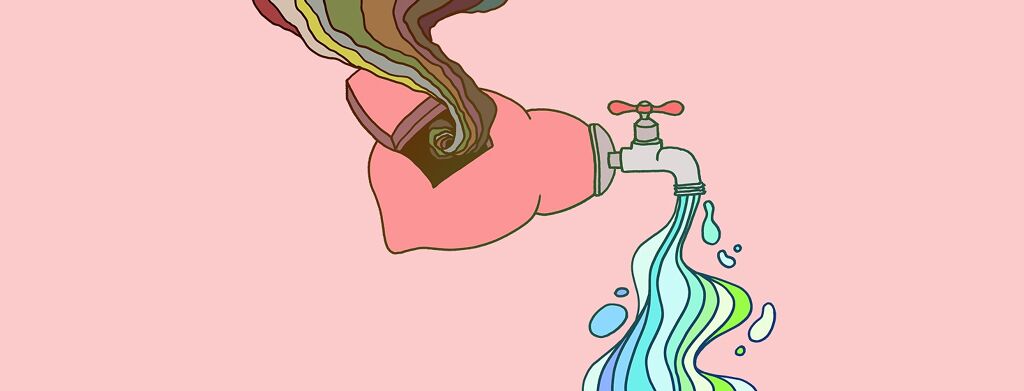Understanding the Liver’s Many Functions
The liver is one of the most vital and versatile organs in the human body. Tucked beneath your rib cage on the right side, it is the body’s largest internal organ. Spongy and about the size of a football, the liver performs life-sustaining functions that the body needs to thrive.1,2
Anatomy of the liver
The average size of the liver depends on a person’s height and weight. But typically, it weighs about 3 pounds in an adult.1-3
The liver has 2 main sections, also called lobes: the larger right lobe and the smaller left lobe. These lobes are further divided into smaller segments. Each has its own blood supply.1-3
The liver receives blood from 2 vital sources: the hepatic artery and the hepatic portal vein. These carry blood to the liver. Without this blood flow, the liver would not be able to perform its many functions.1-3
The liver’s functions
The liver performs over 500 essential functions that keep your body running smoothly. Here are just a few.1-3
Filters blood
The liver filters blood all day, every day – about 1 liter of blood every single minute. That is why it is a deep, reddish brown color.1-3
During this filtration process, the liver breaks down harmful substances such as alcohol, drugs, and toxins. Then it expels them as waste. It acts as the body’s primary detoxification system. Filtering the blood is one of the liver’s most important jobs.1-3
Metabolizes carbs, proteins, and fats
The liver helps turn what we eat and drink – carbohydrates, fats, and proteins – into energy. It converts extra sugar (glucose) into glycogen and stores it for later use. The liver also manages cholesterol levels and processes amino acids, which are the building blocks of proteins.1,2
Produces bile
Bile is an acidic substance that digests fats and helps break down food. Bile is created in the liver, stored in the gallbladder – tucked just under the liver – and released into the small intestine as needed.1,2
Stores nutrients
The liver stores essential nutrients, including vitamins, minerals, and iron. It also stores glycogen that the body can use quickly for energy when needed.1-3
Regulates blood clotting
The liver produces proteins that are essential for blood clotting. Blood needs to clot if an injury occurs. This clotting process helps prevent excessive bleeding.1-3
Boosts the immune system
The liver helps fight off infections by producing substances that help the immune system and removing bacteria from the blood.1,3
How the liver keeps you healthy
The liver’s ability to detoxify the body is crucial. It breaks down medicines, drugs, and poisonous substances and prepares them to be released from the body. Once the liver has filtered the blood, these by-products are then further filtered through the kidneys in the form of urine. The liver also transforms ammonia, which is created when metabolizing protein, into urea. Urea is then excreted by the kidneys.1-3
When it comes to metabolism, the liver maintains blood sugar levels by storing and releasing glucose as needed. For example, during fasting or intense exercise, the liver converts stored glycogen back into glucose so the body can use it for energy.1-3
Producing and secreting bile is another necessary job that helps us survive. Bile helps break down fats in the digestive tract. This makes them easier to digest and absorb. Bile also helps absorb fat-soluble vitamins, providing the body with the nutrients it needs to survive. Bile by-products are then released from the body through poop.1-3
Liver conditions
The liver is very resilient. It can take a lot of wear and tear and still function. But too much damage for too long can lead to fat buildup, inflammation, and scarring in the liver. This interferes with the organ’s ability to function.1,2
When the liver is not working properly, a whole slew of health complications can arise, such as:1,2
- Hepatitis – Inflammation in the liver can result from viral hepatitis infections, autoimmune reactions, and other causes.
- Fatty liver disease – Buildup of fat in the liver can cause inflammation and damage. This fat buildup is often linked to obesity and type 2 diabetes.
- Fibrosis – This means scarring of the liver. With fibrosis, there is typically time to reverse the damage through treatment and lifestyle changes.
- Cirrhosis – With cirrhosis, there is permanent scarring of the liver. Blood flow to the liver is completely blocked. Cirrhosis is serious and can lead to liver failure.
- Liver cancer – Cancer cells can grow in the liver as a result of inflammation and liver damage. Liver cancer is also known as hepatocellular carcinoma.
- Liver failure – The liver is no longer functioning. A liver transplant from a deceased or living donor is needed in order to survive.
Keeping your liver healthy
The liver is truly an extraordinary organ. We all need a healthy liver in order to live.1
Keeping your liver healthy involves eating a balanced diet, getting regular exercise, consuming moderate to no alcohol, and avoiding illicit drugs. Get vaccinated for hepatitis A and B to prevent viral infections. Stay on top of regular health checkups to monitor your liver health, especially if you have comorbidities like obesity or type 2 diabetes.2

Join the conversation